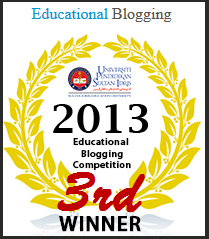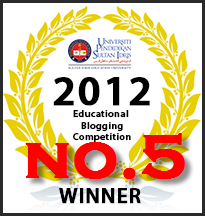Input is any data or instructions that we enter into the computer system for processing.
Masukan data adalah apa-apa data atau arahan yang dimasukkan ke dalam sistem komputer untuk diproses.

Output Devices / Peranti Keluaran
Output is data that has been processed into a useful form, called information. There are four types of output, which are texts, graphics, audio and video
Keluaran adalah data yang diproses ke dalam bentuk berguna dipanggil maklumat. Ada 4 jenis keluaran iaitu teks, grafik,audio dan video.
Storage Devices / Peranti Simpanan
Storage is a location which data, instruction and information are held for future use. Every computer uses storage to hold system software and application software
Simpanan adalah tempat di mana data, arahan dan maklumat disimpan untuk kegunaan akan datang. Setiap komputer mempunyai simpanan untuk memegang perisian sistem dan perisian aplikasi.
2 JENIS UTAMA
a) Primary Storage / Storan Primer
RAM (RANDOM ACCESS MEMORY)
RAM is an electronic, or volatile, state. When the computer is off, RAM is empty; when it is on, RAM is capable of receiving and holding a copy of the software instructions and data necessary for processing. The Ram is used for the following purposes:
• Storage of a copy of the main systems program that controls the general operation of the computer. This copy is loaded into RAM when the computer is turn on; it stays there as long as the computer is on.
• Temporary storage of a copy of application program instructions to be retrieved by the central processing unit (CPU) for interpretation and execution.
• Temporary storage of data that has been input from the keyboard or other input device until instructions call for the data to be transferred into the CPU for processing.
• Temporary storage of data that has been produced as a result of processing until instructions call for the data to be used again in subsequent processing or to be transferred to an output device such as the screen, a printer, or a disk storage device.
• RAM chips are often called dynamic RAM (DRAM) chips, based on the style of the electric circuits.
RAM adalah volatile atau meruap . Ketika komputer dimatikan, RAM tidak menyimpan apa-apa ketika aktif, RAM boleh menerima dan memegang salinan arrahan perisian dan data yang diperlukan untuk diproses. Ram digunakan untuk tujuan berikut:• Simpanan salinan program utama yang mengendalikan sistem operasi komputer . salinan ini dimuat ke RAM apabila komputer menyala; itu tetap ada selama komputer aktif.• simpanan sementara salinan Arahan program aplikasi yang akan diambil oleh unit pemprosesan pusat (CPU) untuk tafsiran
• simpanan sementara data yang telah masukkan dari keyboard atau peranti input lain sampai Arahan panggilan untuk data yang akan dipindahkan ke CPU untuk diproses.• simpanan sementara data yang telah dihasilkan sebagai hasil dari pemprosesan hingga Arahan panggilan untuk data yang akan digunakan semula dalam proses seterusnya atau yang akan dipindahkan ke peranti output seperti skrin, pencetak, atau peranti simpanan cakera.• RAM cip yang sering disebut RAM dinamik (DRAM) chips, berdasarkan gaya litar elektrik.
ROM (READ ONLY MEMORY)
Read-only memory (usually known by its acronym, ROM) is a class of storage media used in computers and other electronic devices. Because data stored in ROM cannot be modified (at least not very quickly or easily)
Read-only memori (biasanya dikenali dengan singkatan nya, ROM) adalah kelas media simpanan yang digunakan dalam komputer dan peranti elektronik lain. Karena data yang disimpan dalam ROM tidak dapat diubah (sekurang-kurangnya tidak terlalu cepat atau mudah)
b) Secondary Storage / Storan Sekunder
2 JENIS UTAMA
a) Primary Storage / Storan Primer
RAM (RANDOM ACCESS MEMORY)
RAM is an electronic, or volatile, state. When the computer is off, RAM is empty; when it is on, RAM is capable of receiving and holding a copy of the software instructions and data necessary for processing. The Ram is used for the following purposes:
• Storage of a copy of the main systems program that controls the general operation of the computer. This copy is loaded into RAM when the computer is turn on; it stays there as long as the computer is on.
• Temporary storage of a copy of application program instructions to be retrieved by the central processing unit (CPU) for interpretation and execution.
• Temporary storage of data that has been input from the keyboard or other input device until instructions call for the data to be transferred into the CPU for processing.
• Temporary storage of data that has been produced as a result of processing until instructions call for the data to be used again in subsequent processing or to be transferred to an output device such as the screen, a printer, or a disk storage device.
• RAM chips are often called dynamic RAM (DRAM) chips, based on the style of the electric circuits.
RAM adalah volatile atau meruap . Ketika komputer dimatikan, RAM tidak menyimpan apa-apa ketika aktif, RAM boleh menerima dan memegang salinan arrahan perisian dan data yang diperlukan untuk diproses. Ram digunakan untuk tujuan berikut:• Simpanan salinan program utama yang mengendalikan sistem operasi komputer . salinan ini dimuat ke RAM apabila komputer menyala; itu tetap ada selama komputer aktif.• simpanan sementara salinan Arahan program aplikasi yang akan diambil oleh unit pemprosesan pusat (CPU) untuk tafsiran
• simpanan sementara data yang telah masukkan dari keyboard atau peranti input lain sampai Arahan panggilan untuk data yang akan dipindahkan ke CPU untuk diproses.• simpanan sementara data yang telah dihasilkan sebagai hasil dari pemprosesan hingga Arahan panggilan untuk data yang akan digunakan semula dalam proses seterusnya atau yang akan dipindahkan ke peranti output seperti skrin, pencetak, atau peranti simpanan cakera.• RAM cip yang sering disebut RAM dinamik (DRAM) chips, berdasarkan gaya litar elektrik.
ROM (READ ONLY MEMORY)
Read-only memory (usually known by its acronym, ROM) is a class of storage media used in computers and other electronic devices. Because data stored in ROM cannot be modified (at least not very quickly or easily)
Read-only memori (biasanya dikenali dengan singkatan nya, ROM) adalah kelas media simpanan yang digunakan dalam komputer dan peranti elektronik lain. Karena data yang disimpan dalam ROM tidak dapat diubah (sekurang-kurangnya tidak terlalu cepat atau mudah)
b) Secondary Storage / Storan Sekunder















































0 comments :
Catat Ulasan